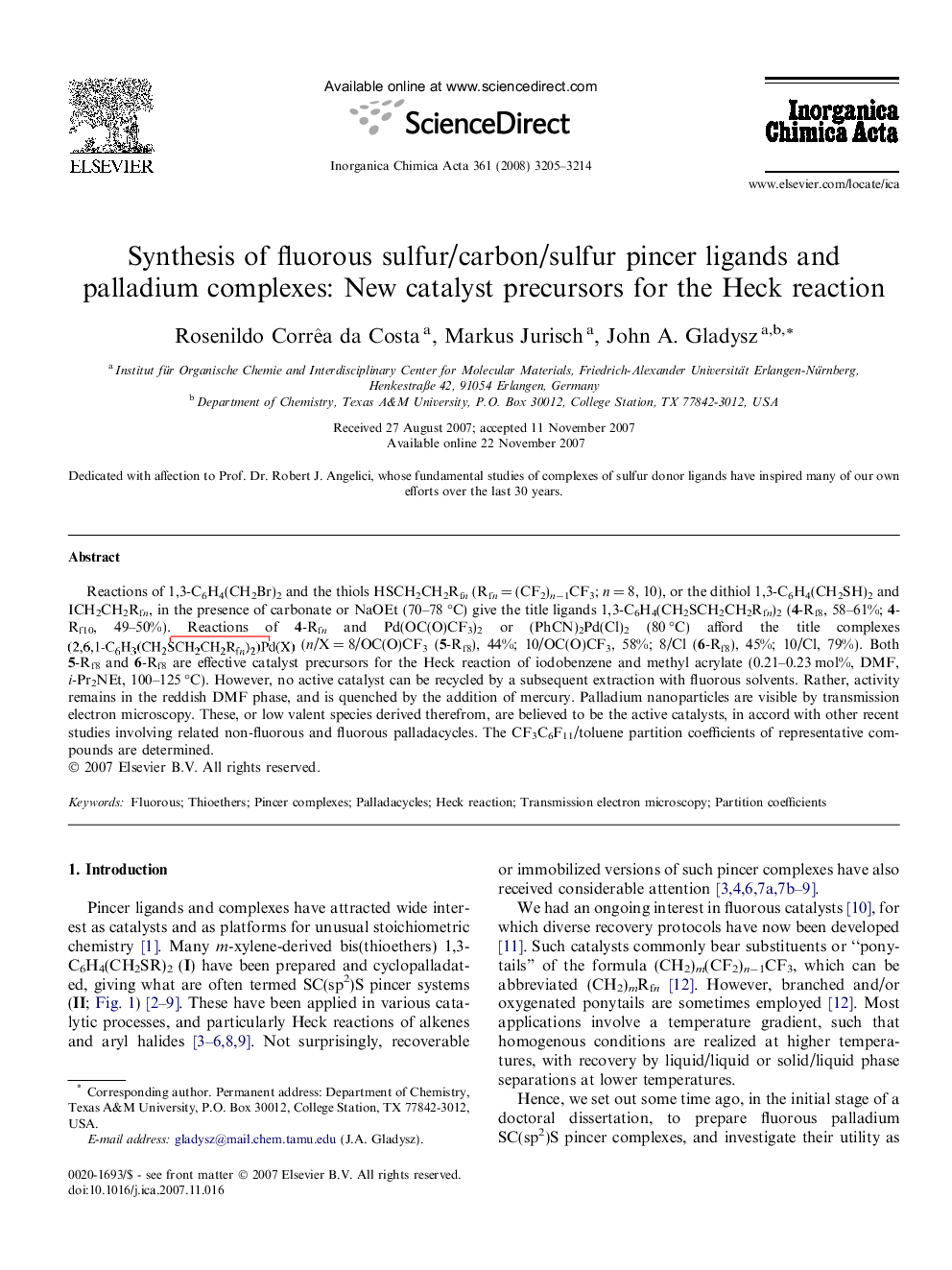| Article ID | Journal | Published Year | Pages | File Type |
|---|---|---|---|---|
| 1311595 | Inorganica Chimica Acta | 2008 | 10 Pages |
Reactions of 1,3-C6H4(CH2Br)2 and the thiols HSCH2CH2Rfn (Rfn = (CF2)n−1CF3; n = 8, 10), or the dithiol 1,3-C6H4(CH2SH)2 and ICH2CH2Rfn, in the presence of carbonate or NaOEt (70–78 °C) give the title ligands 1,3-C6H4(CH2SCH2CH2Rfn)2 (4-Rf8, 58–61%; 4-Rf10, 49–50%). Reactions of 4-Rfn and Pd(OC(O)CF3)2 or (PhCN)2Pd(Cl)2 (80 °C) afford the title complexes (n/X = 8/OC(O)CF3 (5-Rf8), 44%; 10/OC(O)CF3, 58%; 8/Cl (6-Rf8), 45%; 10/Cl, 79%). Both 5-Rf8 and 6-Rf8 are effective catalyst precursors for the Heck reaction of iodobenzene and methyl acrylate (0.21–0.23 mol%, DMF, i-Pr2NEt, 100–125 °C). However, no active catalyst can be recycled by a subsequent extraction with fluorous solvents. Rather, activity remains in the reddish DMF phase, and is quenched by the addition of mercury. Palladium nanoparticles are visible by transmission electron microscopy. These, or low valent species derived therefrom, are believed to be the active catalysts, in accord with other recent studies involving related non-fluorous and fluorous palladacycles. The CF3C6F11/toluene partition coefficients of representative compounds are determined.
Graphical abstractCondensations of fluorous alkyl thiols or iodides with α,α′ dibromides or dithiols of m-xylene afford the pincer ligands 4-Rfn, the cyclopalladation products of which are active catalyst precursors for the Heck reaction; mechanistic data suggest that palladium nanoparticles or low-valent species derived therefrom are the actual catalysts.Figure optionsDownload full-size imageDownload as PowerPoint slide
